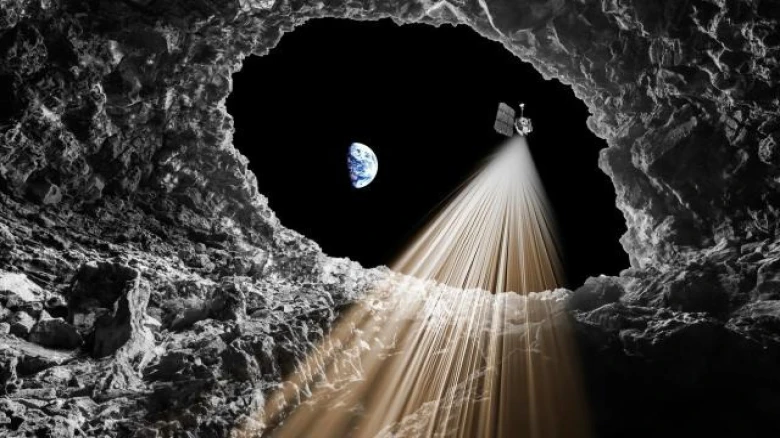This discovery is particularly significant as lunar caves have long been speculated but never definitively proven until now...
Digital Desk: In a groundbreaking discovery, scientists have confirmed the existence of a cave on the moon, not far from the historic Apollo 11 landing site where Neil Armstrong and Buzz Aldrin made their monumental steps 55 years ago. This cave, located at the Sea of Tranquility, offers intriguing prospects for future lunar missions, potentially serving as a shelter for astronauts.
The Italian-led research team revealed their findings based on extensive analysis of radar measurements from NASA's Lunar Reconnaissance Orbiter. These measurements indicated the presence of a sizable cave accessible from a collapsed lava tube, marking it as one of more than 200 pits discovered on the moon.
According to the scientists from the University of Trento, the initial analysis suggests the cave is at least 130 feet wide and extends for tens of yards, although its full extent remains uncharted. This discovery is particularly significant as lunar caves have long been speculated but never definitively proven until now.
Most of these pits and lava tubes are found in the moon's ancient lava plains, with potential clusters also identified near the moon's south pole. NASA plans to target this region for future astronaut landings due to its suspected water ice deposits, crucial for sustaining human presence on the moon.
These caves offer natural protection from cosmic rays, solar radiation, and micrometeorite impacts, making them ideal shelters for astronauts. Establishing habitats within these pre-existing structures could expedite lunar exploration efforts, compared to building habitats from scratch on the moon's harsh surface.
Moreover, the rocks and materials preserved within these caves provide scientists with invaluable insights into the moon's geological history and evolution. These samples, relatively unaffected by lunar surface conditions over millions of years, could unlock critical clues about the moon's volcanic past and broader planetary processes.
As humanity looks towards returning to the moon and establishing a sustainable presence, these lunar caves represent a promising frontier. They not only offer practical advantages for human habitation but also hold keys to unraveling the mysteries of our celestial neighbor, shaping our understanding of lunar evolution and planetary science.

Leave A Comment